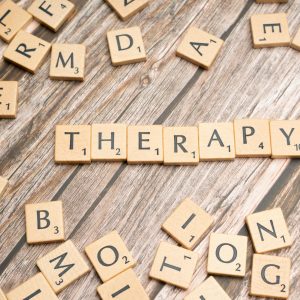Creative blocks are a common and often frustrating experience for artists, writers, and anyone engaged in creative pursuits. These blocks can manifest as an inability to generate new ideas, a lack of motivation, or a persistent feeling of being stuck. Psychoanalysis offers valuable insights into the underlying psychological factors contributing to creative blocks and provides strategies for overcoming them.
Understanding Creative Blocks
What Are Creative Blocks?
Creative blocks refer to periods when individuals find it difficult to produce work or come up with new ideas. These blocks can vary in duration and intensity, affecting creativity across different domains, including writing, art, music, and problem-solving.
Common Causes
Creative blocks can arise from various sources, including:
- Fear of Failure: Anxiety about not meeting expectations or producing subpar work can hinder creativity.
- Perfectionism: The desire to create perfect work can lead to self-criticism and procrastination.
- Stress and Fatigue: High levels of stress or physical exhaustion can deplete creative energy and focus.
- Emotional Issues: Unresolved emotional conflicts or trauma can interfere with the creative process.
- Routine and Monotony: Lack of inspiration and stimulation from repetitive tasks or environments.
Psychoanalysis and Creative Blocks
Psychoanalysis, with its focus on the unconscious mind, provides a framework for understanding the deeper psychological factors contributing to creative blocks. It emphasizes the importance of exploring unconscious thoughts, emotions, and experiences that may be influencing the creative process.
The Role of the Unconscious Mind
Freud’s theory of the unconscious mind suggests that many of our thoughts, feelings, and motivations lie beneath conscious awareness. Creative blocks can result from unconscious conflicts or repressed emotions that disrupt the flow of creativity. By bringing these unconscious factors to light, individuals can gain insight into their creative struggles and work through them.
Defense Mechanisms
Psychoanalysis identifies various defense mechanisms, such as repression, denial, and displacement, which can contribute to creative blocks. For example, an artist might unconsciously repress feelings of inadequacy, leading to a block in their creative expression. Understanding and addressing these defense mechanisms can help unlock creativity.
The Creative Process and Free Association
Free association, a technique used in psychoanalysis, involves expressing thoughts and feelings without censorship. This process can be beneficial for overcoming creative blocks, as it encourages the flow of ideas and emotions without self-judgment. Engaging in free writing or spontaneous art-making can help bypass conscious barriers and access deeper creative potential.
Psychoanalytic Strategies for Overcoming Creative Blocks
Exploring Personal History
Psychoanalysis often involves exploring an individual’s personal history to uncover unresolved conflicts or traumas that may be impacting their creativity. Reflecting on past experiences and their influence on current creative struggles can provide valuable insights and facilitate emotional healing.
Embracing Imperfection
Psychoanalytic theory highlights the importance of accepting and integrating all aspects of oneself, including imperfections. Embracing the idea that creative work does not have to be perfect can reduce anxiety and self-criticism, allowing for a more free-flowing creative process.
Creating a Safe Space for Expression
Therapeutic settings provide a safe and supportive environment for individuals to explore their thoughts and emotions. Similarly, creating a safe space for creative expression—free from judgment and external pressures—can foster creativity. This might involve setting aside dedicated time for creative activities or finding a supportive community of fellow creatives.
Addressing Emotional Blocks
Psychoanalytic therapy can help individuals identify and work through emotional blocks that hinder creativity. By addressing underlying issues such as fear of failure, low self-esteem, or unresolved grief, individuals can free up mental and emotional energy for creative pursuits.
Incorporating Play and Spontaneity
Psychoanalysis recognizes the importance of play and spontaneity in fostering creativity. Engaging in playful and unstructured activities can stimulate the imagination and open new pathways for creative expression. This might involve experimenting with new mediums, techniques, or simply allowing oneself to create without a specific goal or outcome in mind.
Conclusion
Creative blocks can be challenging, but psychoanalysis offers valuable tools for understanding and overcoming these obstacles. By exploring the unconscious mind, addressing emotional conflicts, and embracing a more accepting and playful approach to creativity, individuals can unlock their creative potential and find renewed inspiration. Whether through traditional psychoanalytic therapy or incorporating psychoanalytic principles into one’s creative practice, these insights can help navigate and transcend creative blocks.
